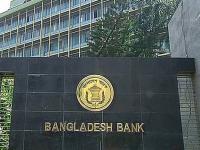
On February 15, Bangladesh Bureau of Statistics (BBS) announced the country’s per capita income (PCI) as Tk 273,360 for FY 2022-23. The figure was Tk 241,047 in FY 2021-22, suggesting a 13.41 percent increase in PCI. The report also confirms that BBS, from now on, will announce PCI figures in taka instead of in the US dollar because of the dollar’s price hike. This has triggered both questions and concerns about their intent. So, based on the official exchange rate of Tk 110 per dollar, the PCI for FY 2022-23 turns out to be $2,485 while the figure was $2,688 for FY 2021-22, as World Bank (WB) data suggests. Since this shows a negative growth figure of 7.6 percent, BBS is seeking shelter under the blanket of reporting the PCI in taka.
This is nothing more than a poor trick that will eventually produce no real gain. Taka has inflated against the dollar, and BBS is using that weakness to look at it as a strength. Think of it this way: in the winter, expressing the temperature in Fahrenheit instead of degrees Celsius will surely make the numbers appear higher. But it won’t give any extra comfort or warmth to the poor who are vulnerable to the shivering cold of Poush and Magh. The US dollar is the single international currency for exchange and comparison, and hence all multilateral agencies/institutions use the dollar to study the states of all economies around the world. Bangladesh cannot stand out of this queue as an exception just because expressing PCI in dollars looks less attractive for reference or political discourse.
The country navigated a tumultuous journey after its independence in 1971. The PCI was merely $91 in 1972, and it reached $260 in 1975. However, the PCI fell to $133 in 1976 and $124 in 1977. But the regimes did not switch to taka in describing the country’s PCI to the global community. WB data suggests that Bangladesh’s PCI was $413 in 2000 and fell slightly to $410 in 2001. Even then, the Awami League regime did not resort to using taka instead of the US dollar simply because figures in taka might look higher than what they would in dollars.
Some companies use strategic pricing, such as by marking the price of an item to be $9.99 instead of $10, in order to attract customers. Some credit card companies mention the annual percentage rate (APR) instead of the effective annual rate (EAR) simply because APR looks slightly smaller than EAR to credit card customers though, eventually, the card companies charge interest as per EAR anyway. Commercial companies use such tricks as part of their marketing plan and to maximise profits. But people do not expect marketing tactics to be used by the state statistical agency that is obligated to work with integrity and honesty.
It is imperative to understand why the PCI is bound to fall based on the developments of the last three years. Since 2017, Bangladesh Bank kept taka’s value artificially high against the dollar, and it helped show both GDP and PCI figures in dollars to be higher than what they really were. But this became impossible to continue by 2022, when the taka’s value collapsed against the dollar. Per WB’s World Development Indicators (WDI), the exchange rate was Tk 85 per dollar in 2001. But the market price by December 2023 per dollar was no less than Tk 120, suggesting roughly a 12 percent fall in taka’s value per year since 2001. Meanwhile, per capita GDP growth, which was 5.5 percent over the same period on average, was not enough to help us overcome the collapse in taka’s value, making a drop in PCI inevitable. This can happen to any country, and it is not a point of shame that needs to be covered up.
Bangladesh Bank’s Monetary Policy Statement (January-June, 2024) calculates taka’s depreciation at 13.8 percent in FY 2023. As per latest news reports, the government’s revised GDP growth for the same fiscal year turns out to be 5.78 percent. The GDP growth rate, after discounting for the population growth rate of 1.1 percent, roughly gives us the per capita GDP growth rate of 4.68 percent which fell much behind the depreciation rate, essentially generating a PCI figure in dollars lower than last year. This is how maths goes, so why does BBS need to hide that reality? This is reminiscent of my childhood, when I used to hide my maths and English mark sheets whenever I scored below the passing mark.
To add perspective, India experienced a fall in its PCI at least five times since 1990 because of various domestic as well as global shocks, but it never resorted to switching to Indian rupees when expressing the PCI.
No matter how developed an economy is, no one in the world has been able to rule out the inevitability of business cycles. And if that is true, the dogma that PCI can never move back is simply a misconception. Bangladesh’s institutions must pay more attention to economics rather than to sugar-coating numbers with politics in mind.
Source : Daily Star









